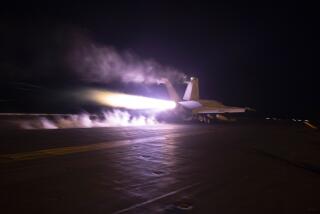Gulf of Aden pirates are having less success
- Share via
Reporting from Manama, Bahrain — Although pirates last year made many more attempts to board ships in the Gulf of Aden and off the coast of Somalia, the number of successful seizures was about the same as in 2008, according to the U.S.-organized multinational maritime force here.
The figures suggest that new “defensive driving” tactics adopted by many commercial shipping companies are helping ward off attackers, naval officials said.
There were 198 attempts at piracy in the vast region last year, a 62% increase from 2008, but only 44 attempts were successful. In 2008, there were 122 attempts and 42 successful acts of piracy.
Last year, an industry group developed a list of “best practices” for ships in pirate-infested waters: placement of physical barriers and razor wire to repel boarders, removal of overboard ladders, use of fire hoses and a planned zigzag method of navigation when pirates approach.
“Believe it or not, there are still merchant ships out there that are not following the ‘best practices,’ including not having a lookout,” said British Royal Navy Commodore Tim Lowe, deputy commander of the Combined Maritime Forces.
The forces include ships from two dozen countries. The North Atlantic Treaty Organization and the European Union have also organized task forces. China, Iran, Malaysia and India have independently sent ships to thwart pirates.
When the piracy problem escalated in the last decade, some shipping companies appeared to be reluctant to change their procedures, possibly because less than 1% of ships are seized.
Also, some companies were concerned that the pirates, who are usually armed with AK-47s and rocket-propelled grenades, might become more violent if merchant ships carried armed guards. The “best practices” document recommends only that ships consider guards.
Working groups from the United Nations are also attempting to trace the money paid in ransom and to persuade more countries to put pirates on trial.
The 22% success rate for pirates last year compares with 34% in 2008 and 63% in 2007, before the three anti-piracy task forces were formed. Yet for pirates who can seize a ship, returns are enormous: In 2009, $48.4 million was paid in ransom.
Most of the pirates come from Somalia, which has a 1,880-mile coastline and virtually no government.
“The solution for piracy is to establish a judicial system and law and order” in Somalia, Lowe said. “Until then, the navies are just trying to keep a cap on it.”
More to Read
Sign up for Essential California
The most important California stories and recommendations in your inbox every morning.
You may occasionally receive promotional content from the Los Angeles Times.









